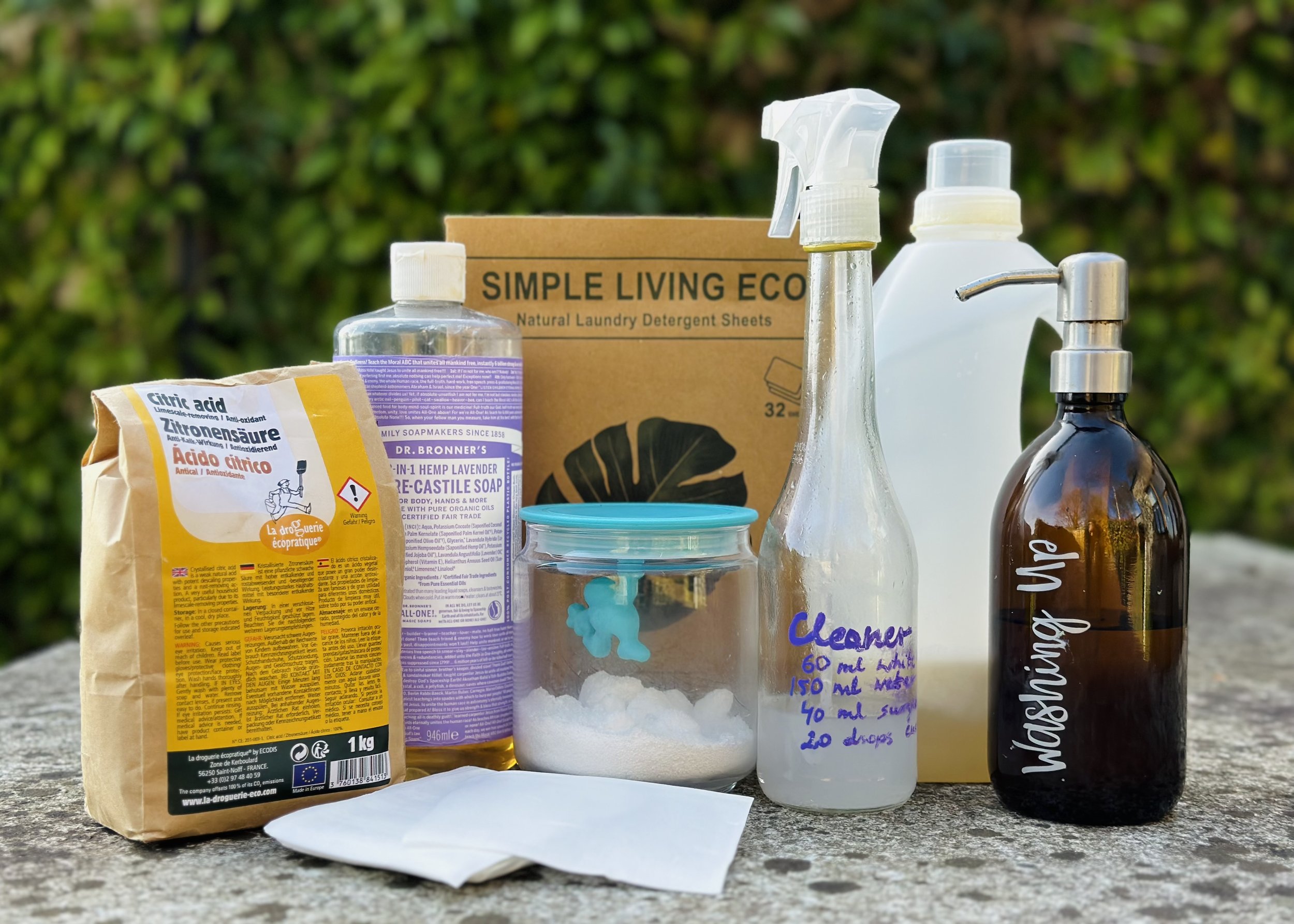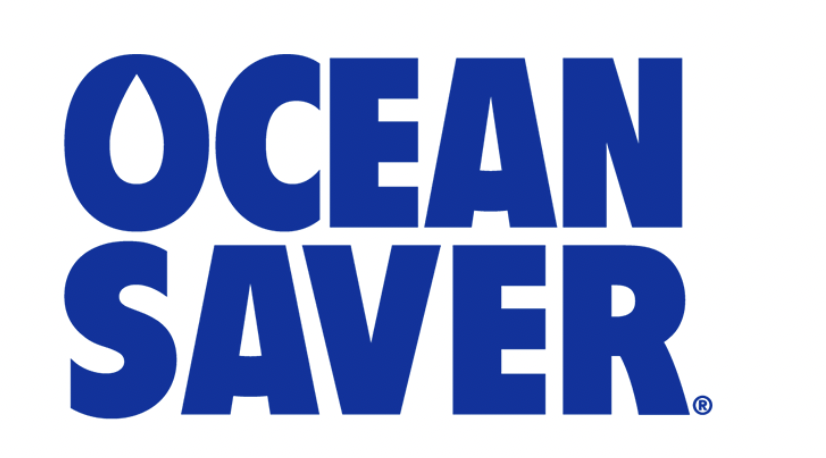NATURAL CLEANING RECIPES
Finding the right natural cleaning products online and in supermarkets is getting easier as more and more people switch from the synthetic alternatives in favour of the benefits of going more natural. EWG (the Environmental Working Group) is a good place to start to see how many synthetic and toxic chemicals are used in your cleaning materials and which are best to avoid. I’ve started to make some of my own cleaning products, not only can it be a more cost effective way of cleaning, it also helps to minimise the toxic chemicals that oh-so-easily enter the home as well as the amount of plastic you use. Another bonus, I can use the same concoction in a number of different ways, doing away with a myriad of bottles marketed for each and every job. Once armed with a reusable spray bottle or two and the ingredients in bulk, you can just make up a fresh batch as necessary. Don’t be fooled into thinking that natural cleaning formulas automatically means they are not effective for getting rid of any build-up of grime, the basics are powerhouses all on their own! A simple and natural ingredient base also means that, when used as intended, the products and scents are safer for four-legged friends, and small children and better for those with allergies or sensitive skin. The ingredients used below are easily sourced from larger supermarkets or available to buy in bulk online. Then, for some of the recipes, a few drops of essential oil of your choice can be added for a fresh scent.
These are my favourite natural cleaning recipes - a mixture of my discoveries collected over the years as well as some shared by my dear friend Alina, a nutritionist and homesteader living in Devon, who’s all over this kind of thing:
1. LAUNDRY LIQUID
INGREDIENTS
40g soap flakes (I use Marseille)
2 tablespoons of bicarbonate soda
20 drops of essential oils (I use orange)
1.5 litres of water
METHOD
Boil half of the water (750ml) in a large cooking pot and dissolve the soap flakes in it.
Once cooled, add the bicarbonate of soda, essential oil drops and the rest of the water (750ml).
Decant into a suitable bottle/s and shake well before every use.
Try 1/4 of the liquid per load and see how that works for the size of your machine and how dirty your items are. When it comes to laundry liquid a little goes a long way, and it is best to work with the motto of less is more. Too much laundry liquid (and fabric softener) can make clothes stiff and cause a buildup of product, which might not rinse out properly and therefore attract dirt to your freshly laundered items.
Alina: *If you have very dirty clothes (as always with kids!) add 1 teaspoon of bicarbonate of soda straight into the drum.
2. FABRIC SOFTENER
Alina adds 1 tablespoon* of distilled white vinegar in the conditioner compartment. “Bonus - the washing machine stays clean and fresh too.”
I’m concerned about the effect of vinegar on any rubber components in my machine (one article I read a while ago said that it can degrade the rubber over time but many I’ve read since dispute this). To be on the safe side I dilute the vinegar using a 50:50 mixture with water which I add to the fabric conditioner drawer at the same time that I fill the laundry detergent drawer with my laundry detergent (as above). I find that this mixture really helps remove any stiffness from my laundry which is prone to not being as fluffy as their tumble-dried counterparts since I line dry.
Vinegar, a natural disinfectant, contains acetic acid, which is much more gentle than it sounds. It cuts through soapy residue and limescale, helping to eliminate odours and keep white clothes whiter, softer and brighter. It’s also safe to use on coloured fabrics, and don’t worry you won't smell the vinegar once your laundry is washed and dried! Since this recipe doesn’t contain harsh chemicals (most commercial fabric softeners use harmful chemicals like parabens, plastics and toluene to make clothes feel softer and smell better) it is great for those with sensitive skin. And again, unlike conventional fabric conditioners, it won’t interfere with the absorbency of your laundry so towels last longer, nor will it leave deposits in your washing machine or plumbing.
INGREDIENTS
500ml distilled white vinegar (buy in bulk)
500ml water
Optional: 10-30 drops of essential oil of your choice (skip if you have very sensitive skin, especially citrus oils)
METHOD
Combine water and vinegar in a glass container. Stir in essential oils, if desired.
Shake well before use and use ¼ to ½ cup per load. Remember to add to the rinse cycle, not the wash cycle.
*A new fabric softener that I’ve adopted, which I find easier to use and doesn’t need diluting, is soda crystals. Buy tsoda crystals in a bulk bag, store in an easy to access jar and use the same amount - 1 tbs in with the usual detergent.
3. OIL STAIN REMOVER
*I can vouch this worked on Nick’s cashmere jumper (thanks Alina!) but please always test on a small area first.
INGREDIENTS
Eco washing up liquid (I use Ecover or Method)
Enough bicarbonate of soda to make a paste to cover the stain
METHOD
Add washing-up liquid straight onto the stain along with enough bicarbonate soda to make a paste. Rub the paste in.
Leave it to work for a few minutes
Rinse with water or wash as normal.
4. MULTIPURPOSE SPRAY
INGREDIENTS
20ml surgical spirit (try your local pharmacy)
20 drops of essential oils (I use eucalyptus)
150ml water
METHOD
Mix all the ingredients together, pour them into your spray bottle and it’s ready to spray.
5. TOILET CLEANER
INGREDIENTS
Multipurpose Spray (see recipe + method above)
Citric Acid
METHOD
Use the multipurpose spray for the seat and the rim and sprinkle some citric acid into the bowl overnight. It’s ready to be scrubbed with a brush in the morning. For stubborn limescale deposits try a 2-pence coin. Plunge the water out, pop on your gloves and use the coin to scrape the limescale off quickly and easily - abandon this if it doesn’t come off easily as you don’t want to damage the enamel! But it has worked like a dream for both myself and Alina. There are usually some black marks left over but a quick brush again can solve this problem. Again, try on a small area first.
If you don’t fancy making your own products there is usually a decent choice at larger supermarkets now as well as some super cool, and well-designed eco-indie cleaning brands out there now, some even mailing directly to your home. Check out the below:




















